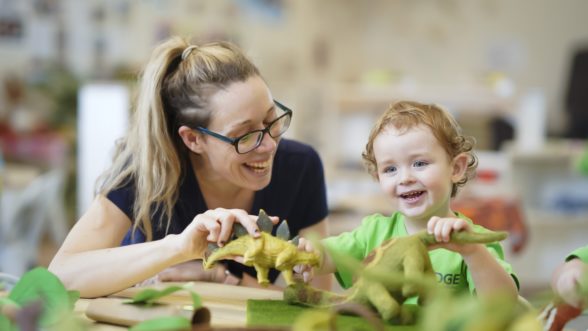
Top News, Useful tools
Useful tools
08 November, 2025

It’s helpful to know the “terrible twos” are a normal developmental stage that most children experience. Not sure if your little one is there yet? If they suddenly start to lose their cool when you bring them the “wrong” socks or when you cut their toast into squares instead of triangles, that could be the first signs of “terrible twos”. Take heart in knowing that your child doesn’t mean to behave so irrationally, they’ve just got a lot going on in their growing brains! They’re developmentally ready to have their own ideas and preferences, but they can’t yet communicate them and it’s super-frustrating!
Imagine having a clear idea about what you want to eat for breakfast, what outfit you want to wear today or book you want to read, but no one understands you and they keep offering you something else. It’s kind of irritating. Now imagine that happening ALL DAY LONG. Add to that perhaps you’re feeling a bit tired. Or hungry (because your sandwich had peanut butter instead of vegemite on it so you didn’t eat it!).
Frustration is a big contributor to two-year-old tantrums. While toddlers are growing at a rapid rate both intellectually and physically, their language skills often aren’t advanced enough to articulate all the new thoughts and ideas whirring through their brains.
“Terrible twos” symptoms can vary in individual children as they respond to this stage in different ways. Usually, compliant children may start to:
Recognising this developmental phase can help you to respond to your child’s behaviour with the patience and understanding they need. As always, sticking to a good routine, ensuring adequate sleep and providing nutritious food will help children feel safe and secure.
Given that frustration around communication is a big contributor, it may be worth spending time working out agreed non-verbal cues with your child, such as nodding and shaking their head for yes and no, or pointing to their preferred option.
Allowing more time to involve your child in choosing their outfit or sandwich filling respects their increasing need for independence. It can be helpful to offer them two simple choices, rather than overwhelming them with everything in the cupboard!
Praising good behaviour can be helpful, while some children respond well to calming techniques, and distraction is a great tool for every parent. For those times when these all fail, you may consider taking away privileges or putting your child in timeout. Most importantly, try to stay calm. Our Parent’s Guide to Surviving Temper Tantrums may help.
If you’re in the midst of it, I’m sure you’re keen to know when do “terrible twos” end! Of course, it varies from child to child! While the “terrible twos” usually appear in children after they turn two, it may occur up to a year earlier or later, hence the term “terrible threes”! The good news is, this behaviour eases as children develop more language skills and are able to better manage their emotions.
Experts agree most children experience the “terrible twos” to some extent. Research shows tantrums occur in 87 per cent of 18 to 24-month-olds and 91 per cent of 30 to 36-month-olds.
While tantrums are normal, constant, dangerous or extreme tantrums and defiance can indicate a behavioural disorder. If you’re feeling unsure or overwhelmed, it is worth speaking to your General Practitioner or Pediatrician.
At Edge Early Learning, we’re committed to supporting parents to help children grow and thrive. We have excellent routines in place and provide children with understanding and care through all their developmental stages. Learn more about the importance of routines in early childhood, here!